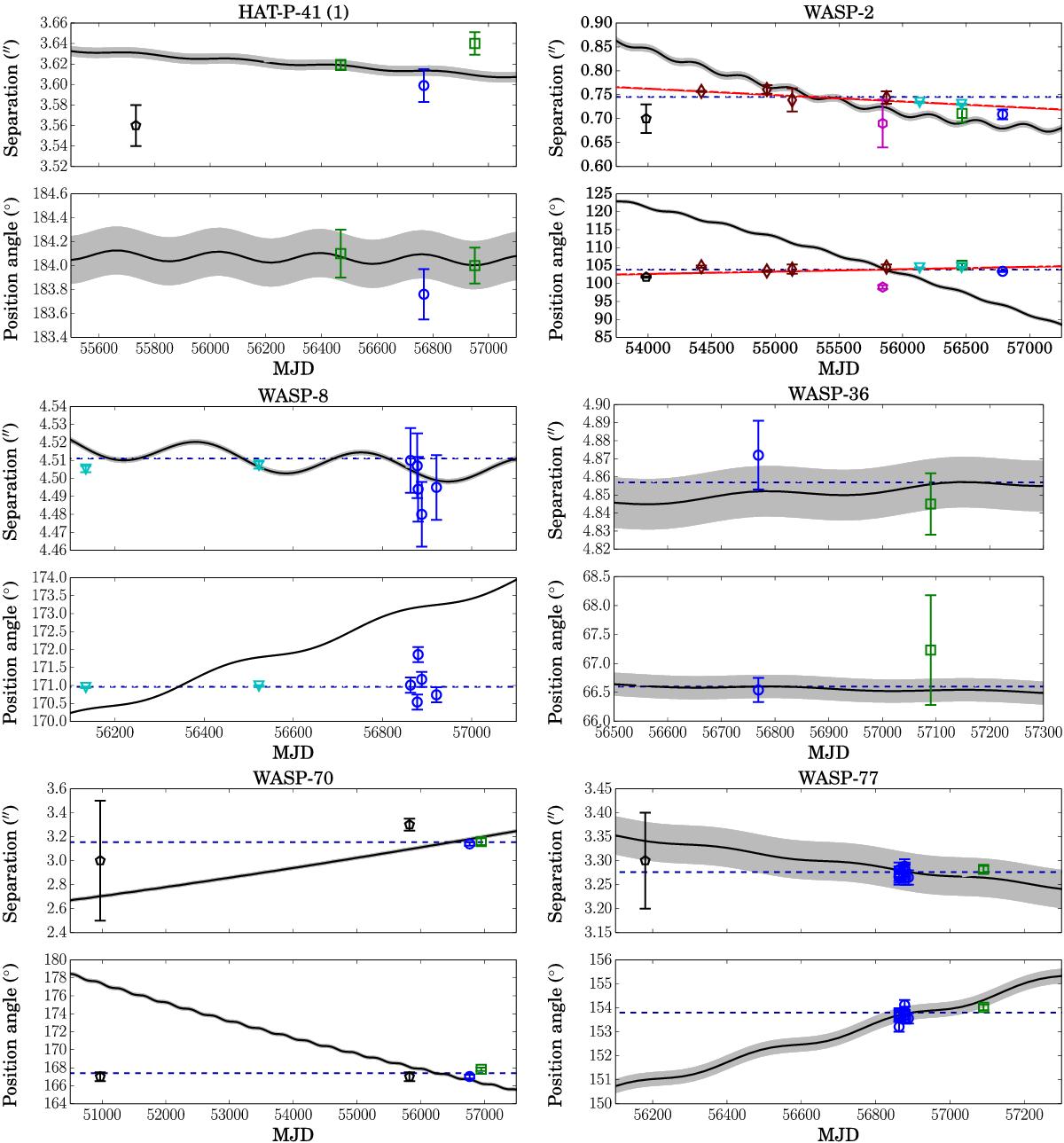Fig. 7

The relative motions between planet host stars and the candidate companions where observations over several epochs are available. The black lines show the expected motion if the detected star were a distant background star, assuming that such a star would have negligible proper motion compared to the foreground planet host star. The shaded areas indicate the 1σ uncertainties on the motions, based on the errors in proper motion. The dashed blue line is the best fit assuming no relative motion between the two stars. In the case of WASP-2, the red line shows the best fit to the linear trend in separation and position angle, discussed in Sect. 4.9. The symbols indicate the source of each point: blue circles – this work; green squares – Wöllert et al. (2015), Wöllert & Brandner (2015); cyan downwards triangles – Ngo et al. (2015); magenta hexagons – Adams et al. (2013); brown diamonds – Daemgen et al. (2009), Bergfors et al. (2013) black pentagons – 2MASS, Washington Double Star catalog (WASP-70) or Skillen (priv. comm., WASP-2).
Current usage metrics show cumulative count of Article Views (full-text article views including HTML views, PDF and ePub downloads, according to the available data) and Abstracts Views on Vision4Press platform.
Data correspond to usage on the plateform after 2015. The current usage metrics is available 48-96 hours after online publication and is updated daily on week days.
Initial download of the metrics may take a while.


